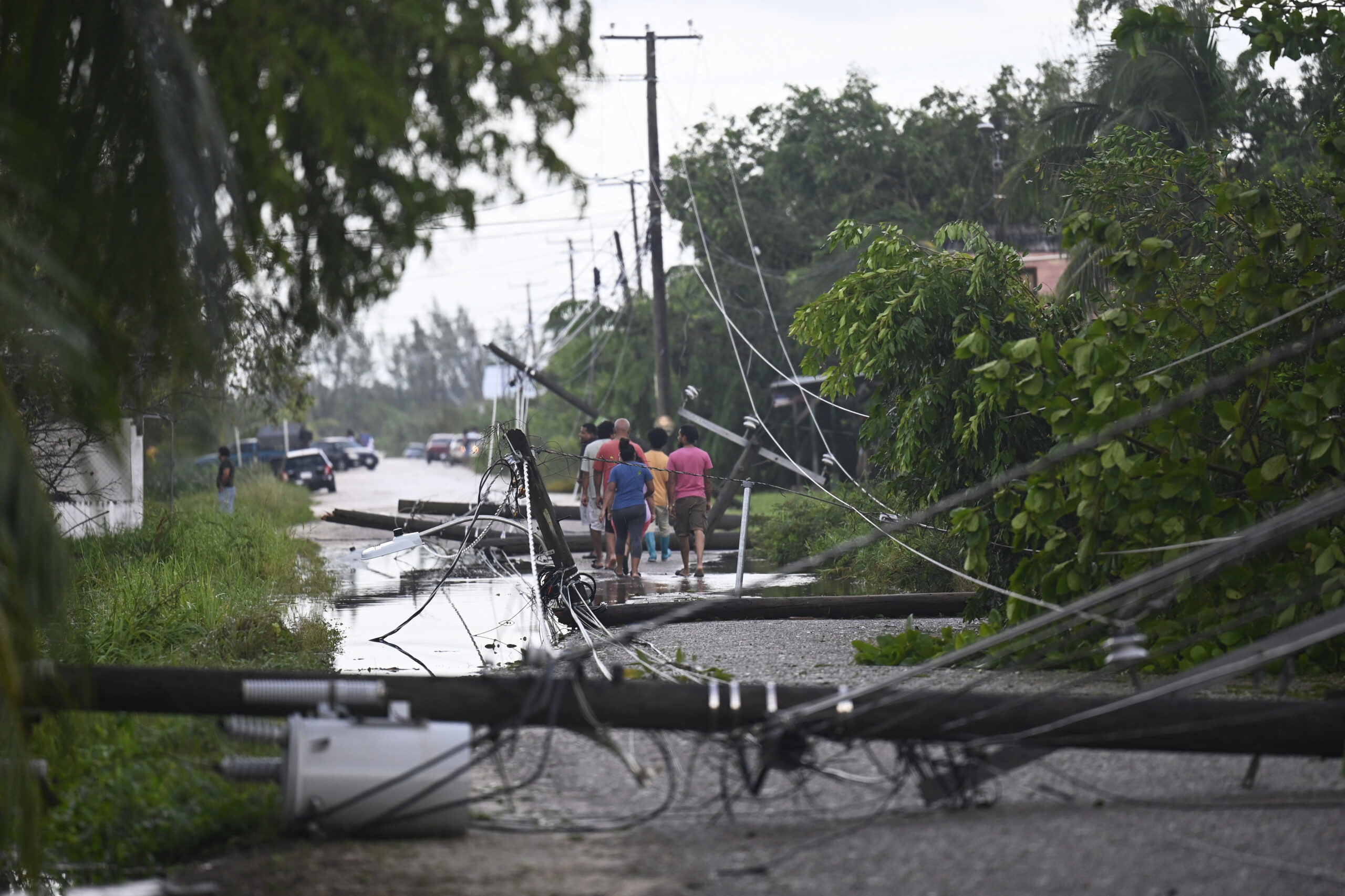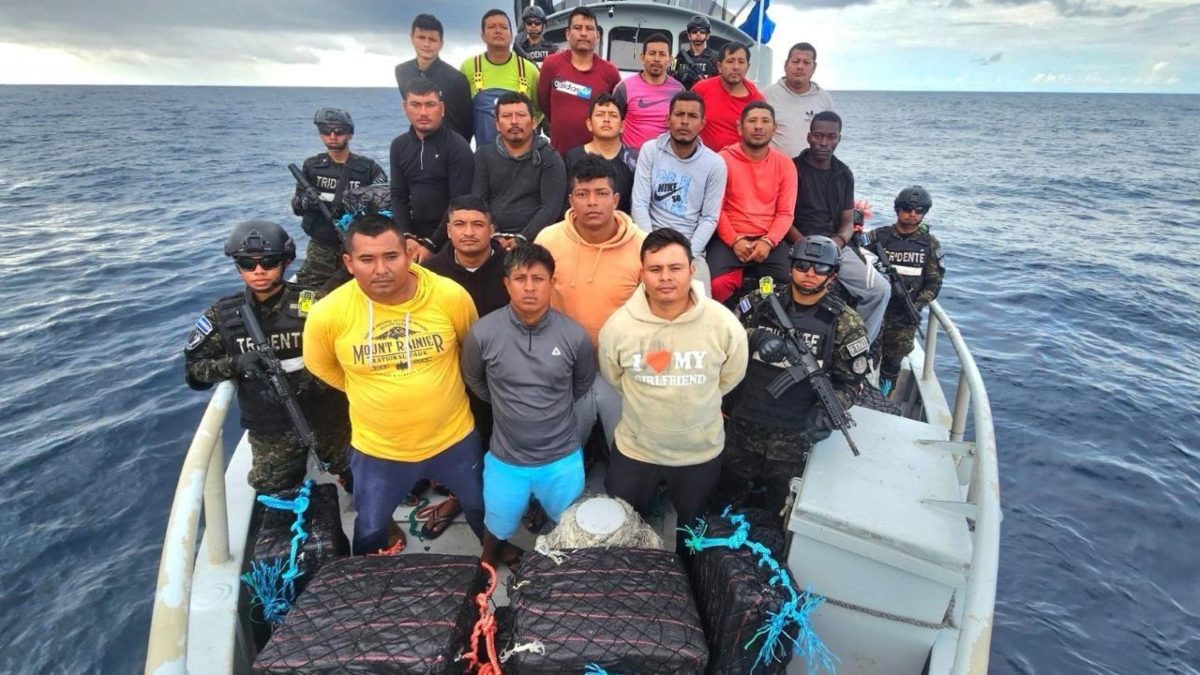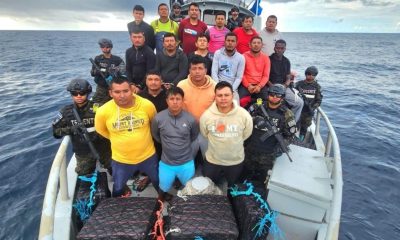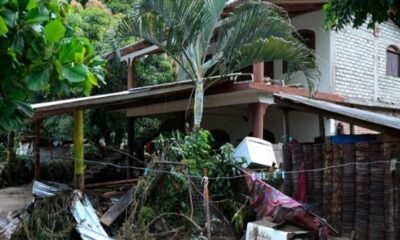Central America
Tropical Storm Lisa moves towards Mexico after lashing Belize

| By AFP |
Tropical Storm Lisa slowed on Thursday after making landfall in Belize, causing flooding and plunging parts of the country into darkness as it churned westwards toward Mexico.
Both Mexico and Belize dropped their coastal tropical storm warnings as the former hurricane weakened and headed west at 10 miles per hour (16 kilometers per hour), according to the US National Hurricane Center (NHC) in Miami.
Forecasters warned that the tourist-popular coast of Central America and the Yucatan Peninsula should continue monitoring the situation as the maximum sustained winds decreased to around 45 mph (75 kph).
For the next day or so, the storm system is expected to pack a gusty punch and deliver heavy rain, swells and flash flooding to northern Guatemala and southeastern Mexico, further weakening as it moves inland.
Lisa slammed into the Sibun River just southwest of economic hub and former capital Belize City around 2120 GMT on Wednesday, uprooting trees, downing power lines and inundating streets.
“It’s very dangerous for us” because in Belize “it floods quickly, even with moderate rain,” Jasmin Ayuso, a 21-year-old secretary, told AFP.
A state of emergency was declared in two areas, while a curfew was in effect until dawn on Thursday.
Some parts of Belize were left without power as the storm lashed the country of about 405,000 people.
“BEL is aware of power outages affecting several areas of the country,” the utility wrote on Facebook. “We assure the public that our teams are taking note of the reports of damages to the power system, including fallen power lines and poles.”
Schools and most businesses were closed in anticipation of the storm and the government set up several shelters.
In Belize City and neighboring areas, local media showed weather-battered buildings, flooded streets and yanked out trees after Lisa landed.
The storm is forecast to be further downgraded to a tropical depression by the end of the day before dissipating over Mexico.
Evacuations in Guatemala
The NHC said Lisa could drop up to 10 inches (250 millimetres) of rain in some areas of Belize, northern Guatemala and several states in southern Mexico.
The Yucatan Peninsula, Honduras’ Bay Islands and other areas of Central America were forecast to receive up to six inches of rain.
In Guatemala, heavy rain caused flooding and landslides in the northernmost department Peten on the border with Belize.
About 143 people were evacuated and 48 remain in a shelter, Oscar Cossio, secretary of the National Coordination for Disaster Reduction (CONRED), told a press conference.
Schools in the north canceled classes.
Lisa arrives not even three weeks after the passage of Julia, another Category 1 hurricane, which caused dozens of deaths in Honduras, Guatemala and El Salvador.
Lisa is the 12th named storm this season, a designation given to systems that produce winds of 39 mph (63 kph) or greater, according to the NHC.
Last year’s active Atlantic hurricane season, which officially runs from June through November, saw 21 named storms.
Central America
Arrests and clashes in Tegucigalpa as vote count continues after Honduras election

Protesters affiliated with the ruling Liberty and Refoundation Party (Libre) gathered in a demonstration that led to several arrests, disturbances, the burning of tires, and left at least 15 people injured outside the center where votes from Honduras’ November 30 general election are still being counted.
The group assembled on Monday outside the National Institute for Professional Training (INFOP) in Tegucigalpa, after President Xiomara Castro called on supporters through social media, claiming that a “new coup d’état” was being plotted in Honduras.
“I call on the people, social movements, grassroots organizations, party militants and citizens to urgently and peacefully gather in Tegucigalpa to defend the popular mandate, reject any coup attempt and make it clear to the world that a new coup is taking shape here,” the president said.
Castro has stated that she does not recognize the partial election results, which currently place right-wing candidate Nasry Asfura in the lead with 40.54% of the vote, followed closely by liberal candidate Salvador Nasralla with 39.20%. The ruling party’s candidate, Rixi Moncada, remains in a distant third place with 19.30%, with no realistic chance of a comeback.
Both the Libre Party and the Liberal Party, led by Castro and Nasralla respectively, have alleged electoral fraud. On Tuesday, the two parties agreed to participate in the special review panels that the National Electoral Council (CNE) says will finalize the count by reexamining 1,081 polling records flagged for irregularities.
Former president Manuel Zelaya, Castro’s husband and a senior figure within Libre, said last week that according to his party’s own nationwide tally of presidential ballots, Nasralla—a former Libre member—won the election.
Central America
Bukele says AI partnership with xAI will transform public education in El Salvador

President Nayib Bukele stated on Monday that the implementation of Artificial Intelligence (AI), with the support of Elon Musk’s company xAI, will help redefine the future of public education in El Salvador.
“El Salvador and xAI will redefine the future of public education. Children will not use Grok the same way we use it,” the president wrote on X.
Last week, Bukele and Musk announced a partnership to provide personalized tutoring through the AI assistant Grok for all students enrolled in public schools across the country.
This pioneering alliance between the Government of El Salvador and xAI represents the launch of the world’s first national education program powered by artificial intelligence.
“Grok will be used in all public schools in El Salvador over the next two years. More than one million students will receive personalized tutoring. Thousands of teachers will receive assistance and support as partners in the educational process,” the president explained.
Meanwhile, FMLN Secretary General Manuel Flores described the incorporation of AI into public school education as “reckless,” arguing that many schools still lack basic services such as electricity and internet access.
“Schools do not even have desks. They said: ‘All schools will have internet’; that promise was not fulfilled. And others used to say: ‘The only promises that matter are the ones that are kept,’” Flores said during his regular Monday press conference.
Flores questioned who would teach artificial intelligence classes, noting that in some areas schools lack televisions or electricity. “How are they going to have internet? Starlink [satellite internet service] has already been announced five times,” he added.
He further labeled the AI-driven education program promoted by President Bukele as “another lie,” comparing it to the “Two Schools a Day” initiative, which he claimed is “pure propaganda.”
The “Two Schools a Day” program was announced earlier this year and involves the construction or reconstruction of public schools nationwide to improve educational quality. The project is being implemented by government institutions such as the National Directorate of Municipal Works.
Central America
El Salvador ranks among top countries in the Americas in fight against organized crime

El Salvador has positioned itself as the country in the Americas with the strongest performance in the Global Organized Crime Index (GOCI), ranking 18th out of 35 countries in the region and 77th out of 193 nations worldwide that are engaged in the fight against organized crime.
According to the index, El Salvador outperforms Mexico, which ranks 2nd in the Americas and 3rd globally, as well as the United States, which holds the 14th position in the Americas and 60th worldwide.
The Global Organized Crime Index evaluates multiple indicators, including criminal markets, human trafficking and smuggling, extortion, arms trafficking, counterfeit goods trade, illicit trade in excisable goods, environmental crimes involving flora and fauna, crimes against non-renewable resources, heroin, cocaine, cannabis and synthetic drug trafficking, cyber-dependent crimes, financial crimes, mafia-style groups and criminal networks.
Within Central America, El Salvador surpasses Panama, which ranks 8th in the Americas and 21st globally; Costa Rica, ranked 13th in the region and 58th worldwide; Nicaragua, ranked 16th and 69th; Honduras, positioned 5th in the Americas and 13th globally; and Guatemala, which holds 9th place in the Americas and 25th worldwide.
Belize is the only Central American country ranked above El Salvador, placing 23rd in the Americas and 103rd globally. However, while El Salvador climbed 25 positions compared to its 2023 ranking—improving from 52nd to 77th—Belize dropped three positions, moving from 106th in 2023 to 103rd in the current index.
El Salvador’s progress in combating organized crime also surpasses that of several countries across the Americas, including Venezuela, Colombia, Ecuador, Brazil, Peru, Chile and Paraguay, all of which rank lower both regionally and globally.
-

 Central America4 days ago
Central America4 days agoEl Salvador ranks among top countries in the Americas in fight against organized crime
-

 Central America4 days ago
Central America4 days agoBukele says AI partnership with xAI will transform public education in El Salvador
-

 International3 days ago
International3 days agoRubio rules out 2028 presidential bid if Vance runs
-

 Central America3 days ago
Central America3 days agoArrests and clashes in Tegucigalpa as vote count continues after Honduras election
-

 International22 hours ago
International22 hours agoShakira’s El Salvador concerts sell out in hours, fans demand more dates
-

 International3 days ago
International3 days agoAuthorities search for armed and dangerous suspect in fatal Brown University attack
-

 International22 hours ago
International22 hours agoTrump moves to reclassify marijuana as less dangerous substance
-

 International5 hours ago
International5 hours agoArgentina detects first local cases of Influenza A (H3N2) Subclade K
-

 International5 hours ago
International5 hours agoPentagon confirms Trump pick for SouthCom as U.S. military pressure grows






























